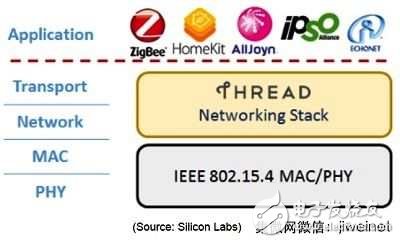Whenever there is new technology in the electronics industry, an inevitable question is: “What is the killer application?†This issue is also difficult for many vendors—especially the Internet of Things (IoT) market—too much because of light. In the home field, the Internet of Things covers a wide range of products, from door locks, thermostats, light bulbs to tablets, set-top boxes, smart TVs...
Skip Ashton, vice president of software division at Silicon Labs, also said in a recent interview with EE TImes US version: "Yeah... I am often asked this." Thread Group chairman Chris Boross was asked earlier this week "What is When Thread (the IP-based smart home networking protocol) killer app?", he paused and replied: "The answer is a bit wide."
Boross explained that Thread can be a "killer", mainly: "We can combine many different devices and let them communicate with each other in the same network;" He revealed that he will be in Las Vegas next month. At the International Consumer Electronics Show (CES) on display: "You will see a number of Thread devices, such as ceiling fans, thermostats, smoke detectors, etc., connected to the same network and communicate with each other."
Ok, let's see CES... but wait a minute - those Thread devices that will be on display at CES, although using the same Thread network protocol and the same mesh network connection, should not be able to transfer instructions to each other (to perform specific Function), unless they "speak" the same language (at the same application level)?
So, which application layer will the Thread products that will be unveiled at CES? Will each device deploy its own application layer? Boross's answer is: "No, actually we have developed a simple, "one-off" application layer for quick display purposes."

Let me figure this out. For example, Freescale (now NXP) told me last month that more than 30 products have recently submitted Thread certification plans; I know that 50% of them are Freescale pre-certified Thread communication protocol software stacks. Use the company's microcontroller (MCU) or application processor. The message disclosed above is clear: Thread is moving towards commercialization.
Maybe it is, but in fact it can only be said to be half right. Different types of Thread products are linked to the same mesh network. If they don't share the same application layer, they can't actually have too much interaction. This is the key to the problem in my cognition; there are too many devices in the house, but there is no real “killer†IoT device usage scenario, which everyone thinks should have.
But Ashton of Silicon Labs doesn't agree. He points out that consumers use IoT devices for different reasons and applications: “Why do people want to go online? The key factor for everyone to browse the web is that the Internet can provide such diversity. Application.†Given the diversity of devices and applications, the decentralized development of IoT devices is inevitable? Ashton thinks this is not the case.
“We have been struggling for such a long time in home automation agreements;†he said, but the industry will eventually see the dawn: “Thread has changed (home automation) related topics.†For example, Ashton said he is again It will not be required to write white papers such as "Thread vs. Z-Wave" and "Thread vs. Zigbee", because no one is controversial about IP, and the industry has a consensus on IP-based agreements.
This is good news, but the bad news is that if your home's electric stove and thermostat don't share the application layer, they won't be able to work together; Aston explains: "It's like you have to call someone in China, but you I don't speak Chinese, you don't know what to do."
30~40 application layers
At present, the application layer is very complicated. Ashton said that there are at least 30 to 40 application layers in the market, not only those developed by large industry alliances such as AllSeen, OIC (Open Internet ConsorTIum), Zigbee, and Z-Wave. Apple's HomeKit also has smaller EnOcean, Echonet Lite and various M2M application layers.
In theory, Thread is designed to communicate with all application layers, as long as those application layers can interface to the Thread device. Thread Group's Boross explained that the organization has actually worked with Zigbee to allow Zigbee's application layer to connect to the Thread network; technology development in conjunction with Thread-Zigbee is currently underway. Boross said that this is the only open cooperation at the moment, but there will be more cooperation next year, allowing different application layers to interface with Thread.
Both Boross and Ashton expect that there will be Thread networking devices designed to support multiple application layers in the future; Ashton said that two or three application layers on an IoT device are feasible. For example, some people would like to see notifications from other IoT devices on the Internet on the TV screen. This opens up the possibility for a “hybrid productâ€, that is, the Zigbee and AllSeen application layers on the IoT device are transparent. Pass the Thread link.
But the industry will always want to see which single application layer wins in the end; Ashton said that many IoT manufacturers only want to choose a common application layer, so there is no need to worry about making the wrong choice. But they actually have the power to decide. If you find that a particular application is too difficult or unpleasant, you should try something else.
In any case, the War of the Internet of Things will be dominated by a hybrid device that supports multiple application layers by 2016. Ashton believes that there will be more than 200 Thread devices certified next year, many of which will be based on Zigbee's application layer. common language.
Solar Controller Mppt,Mppt Solar Charge Controller,12V Mppt Solar Charge Controller,60A Mppt Solar Controller
GuangZhou HanFong New Energy Technology Co. , Ltd. , https://www.gzinverter.com
